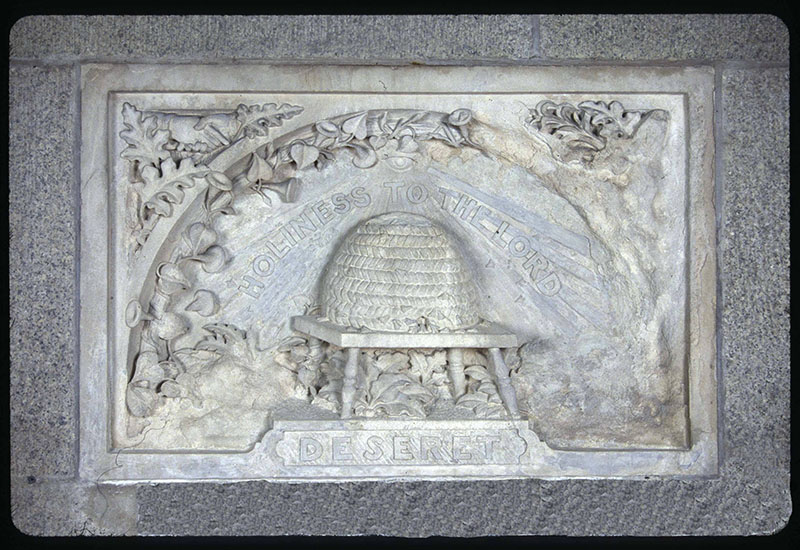Deseret

| Maker | William Ward |
| Date of Creation | 1853–85 |
| Location | Manti, Utah |
| Materials | White Oollytic Limestone |
| Institution | State of Deseret (Utah) |
| Credit Line | N/A |
| Accession Number | N/A |
| Photo Credit | National Park Service |
The State of Utah is represented within the Washington Monument by the Deseret Stone, a two feet by three feet carved stone. The stone is carved from a block of white oollytic limestone, alternatively referenced in the historical records as Bath stone, extracted from the San Pete quarries of Manti, UT. The name of “Deseret” is derived from the word for “honeybee” found within the Book of Mormon and alludes to the religious origins associated with the founding of the state. Drawing from Mormon symbology, the stone contains as carved apiary, or beehive, in the middle of a wilderness setting. Originally, the inscription “Holiness to the Lord. Deseret.” was included on the face of the stone but has since eroded from the face. The stone is attributed to Mormon pioneer artist William Ward, who in 1851, allegedly fashioned the stone with crude tools over the course of only 40 days. The stone is one of the earliest examples of artwork to emerge from the Mormon pioneers of the Salt Lake Basin shortly after settling in the area. After the completion of the carving, the stone endured a three-month journey across the continent prior to arriving in Washington, D.C., in 1853 when it was placed within the Washington Monument prior to the conclusion of the first phase of construction. With the degradation of the textual carving, a companion stone of granite was erected in the monument in 1951 to provide additional context regarding the name of the stone as well as the evolution of the territory eventually to the present-day State of Utah.
